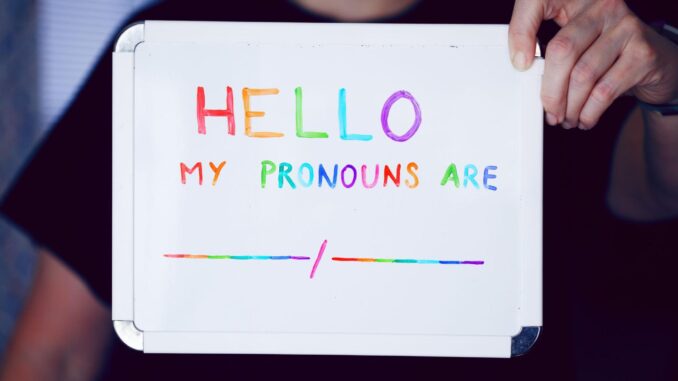
By Sanders Kennedy
Controversy over non-binary pronouns has become a point of disagreement between writers and editors in journalism, reflecting the conflict between traditional reporting norms and the drive for greater inclusivity.
The controversy was one of the many topics discussed at a recent journalism conference.
The Association of LGBTQ+ Journalists held its “2024 National Convention” in Hollywood, California, September 4 to the 8, to bring together individuals in the journalism and communication fields, to network and hold panel discussions on LGBTQ+ issues that are happening around the country.
Members of the LGBT+ community expressed their irritation over news editors curbing the use of non-binary gender pronouns in articles, seeing it as a disregard of their identities. The Associated Press Stylebook 55th edition states that “they, them, their is acceptable in limited cases as gender neutral pronouns, when alternative wording is overly awkward and clumsy,” it goes on to say “However, rewording is usually possible and always is preferable.” Guidelines like this led to frustration, as the community argues that recommending rewording undermines the validity of non-binary existence.
“I’ve had editors in the past who probably, at the very least, will want to have a bigger discussion about it [using nonbinary gender pronouns], because they’re not familiar.” Said Steph Solis, a reporter for Axios Boston, who attended the event. They use they/them/their pronouns. “Maybe they’ve never heard of pronouns other than he, she maybe not even using they. And some of them I know would outright say that’s going to be confusing the readers, like, why would you confuse the readers and not see the opportunity to educate people here?”
They say that this “argument” was used in the past by editors when writers pitched stories about the transgender community.
“It’s the same arguments that are used not to highlight trans people in the first place…decades ago,” Solis went on to say, “Unfortunately, it’s of the same vein.”
In May 2022, the New York Time published an article “How a Debut Graphic Memoir Became the Most Banned Book in the Country.” Non-binary author, Maia Kobabe who goes by gender neutral pronouns (ey, em, eir) was interviewed about eir memoir “Gender Queer,” being the “most banned book,” in America. Throughout the article, Kobabe pronouns were not used when referring to em.
Nick Wolny, a managing editor for CNET, said he was “pissed off” by the NYT including a graph explaining Kobabe’s decision on using gender neutral pronouns but neglecting to use them.
“I mean, you’ve taken the time, and you created the graph to put that point in this, you know, historical context, and then not used what you just educated the audience on to help them apply what they just learned in the rest of the story. That really pissed me off, sorry.”
The NYT website indicates that the article was updated in June 2023, yet, Kobabe’s gender neutral pronouns were not added into the article when referring to eir.
Solis mentioned an article written about WNBA player Layshia Clarendon, published by Popsugar in June 2024. The article used the pronouns “he, she, they,” which Clarendon goes by interchangeably, throughout the article.
“It begins referring to Clarendon using the pronouns ‘they,’ then it says, ‘in her little time off,’ and ‘he couldn’t stop thinking about his chest.’” Solis said, when quoting the article.
They believe this article has a great way to show its “affirming” when discussing a person’s gender/non gender identity.
“This was a great example of a creative way to be affirming when covering someone whose identity the public might know little about,” they went on to say. “Sometimes we can think a little bit outside the box to just use that opportunity,”
